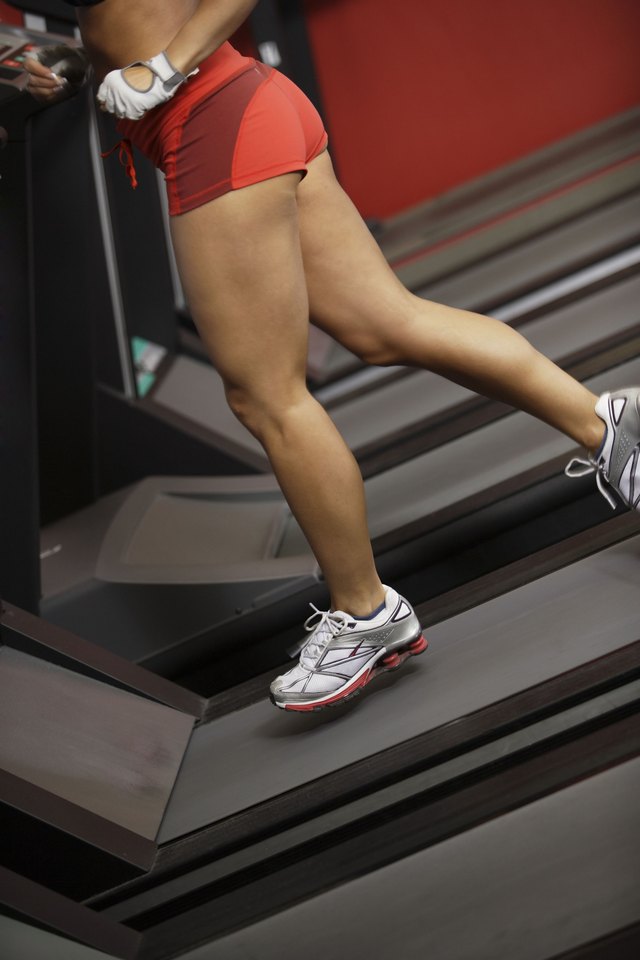Do Leg Curls Work Glutes?

Leg curls refer to a number of different exercises that target the hamstrings. You can do leg curls with the assistance of several different types of machines, cables or a stability ball. While all versions of the leg curl emphasize the hamstrings, some versions do use the gluteus medius or the smaller gluteus medius and minimus to assist the action.
Prone and Seated Leg Curls
A common leg curl exercise is done on a machine in which you lie on your stomach, hook your feet under a padded lever and curl the lever toward your buttocks. In this variation, the glutes are not activated at all. In another common leg curl exercise, you sit in a padded chair and hook your legs over the top of a padded lever. You then curl the legs down by bending your knees at a 90-degree angle. This variation activates similar muscles as the lying curl but also does not involve the glutes.
Standing Variations
Standing leg curls are usually done on a lever machine specially designed for this purpose or from a cable machine. In both of these versions, you stand on one leg and hook the other to the cable or place the ankle in front of the lever as you curl the heel up toward your buttocks. These variations do use the gluteus medius and gluteus minimus, also known as the adductor muscles, for stabilization.
Stability Ball Variation
To do a leg curl with a stability ball, lie on your back on a mat and place your heels on a stability ball. Your legs should be fully extended. Brace your arms on the mat and lift your hips and back up off the floor. Keep your hips and back in one line as you bend the knees to roll the ball toward your buttocks. Straighten your knees to return to the starting position. This version of the leg curl engages the gluteus maximus, the largest muscle of the glute complex, as a stabilizer.
Considerations
The leg curl is an effective hamstring exercise, but if you are more interested in training the glutes, you are better off choosing different exercises. Squats, lunges, step ups and donkey kicks are among the most effective glute strengtheners according to an American Council on Exercise study published in 2006.
References
Writer Bio
Andrea Cespedes is a professionally trained chef who has focused studies in nutrition. With more than 20 years of experience in the fitness industry, she coaches cycling and running and teaches Pilates and yoga. She is an American Council on Exercise-certified personal trainer, RYT-200 and has degrees from Princeton and Columbia University.
